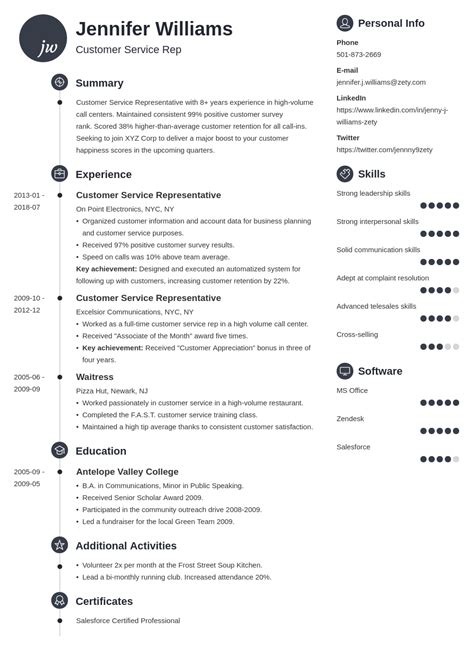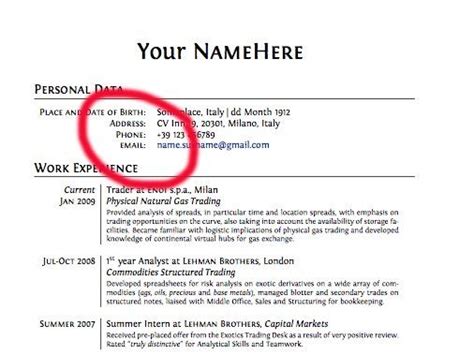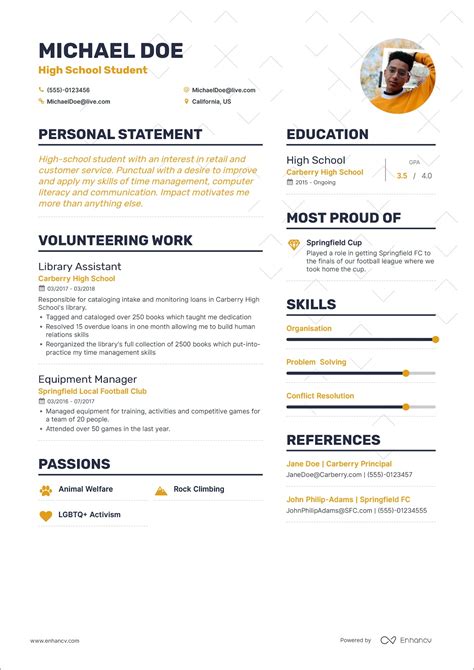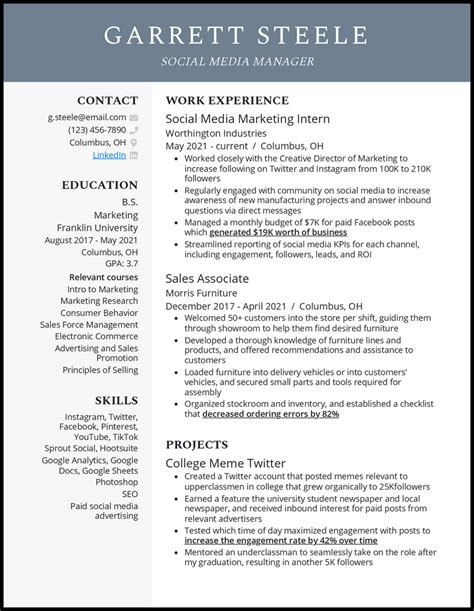Things To Put On A Resume

When crafting a resume, it's crucial to present your skills, experience, and qualifications in a clear and compelling manner. The aim is to showcase your value and convince potential employers that you are the ideal candidate for the role. This article will delve into the essential elements that should be included on a resume to enhance your chances of landing that dream job.
Key Components of a Powerful Resume

A well-structured resume serves as a marketing tool, highlighting your strengths and potential. Here are the key components to consider when constructing your resume:
Contact Information
Begin your resume with your full name, email address, and phone number. Ensure that your contact details are up-to-date and professional. Consider including a LinkedIn profile or a personal website if you have one, as this can provide additional insight into your professional network and online presence.
Professional Summary or Objective
A concise professional summary or objective at the top of your resume can grab the recruiter’s attention. This section should be tailored to the specific job you’re applying for. Highlight your key skills, experience, and career goals, emphasizing how you can contribute to the company’s success.
Education
List your educational background, including the degree(s) you hold, institution(s), and graduation date(s). If you have relevant certifications or professional training, be sure to mention them as well. Highlight any awards or honors you’ve received during your academic journey.
| Degree | Institution | Graduation Date |
|---|---|---|
| Bachelor of Science in Computer Science | University of Technology | 2020 |
| Certified Scrum Master | Scrum Alliance | 2022 |

Work Experience
Detail your professional experience in reverse chronological order. Start with your most recent position and work backward. Include the job title, company name, employment dates, and a brief description of your responsibilities and achievements.
Focus on quantifiable accomplishments and use action verbs to describe your contributions. For example, instead of saying "Responsible for managing projects," try "Successfully led and delivered 5 complex projects, exceeding client expectations and reducing project timelines by 20%."
Skills
Identify and list your hard skills (technical abilities) and soft skills (interpersonal and communication skills). Highlight the skills that are relevant to the job you’re applying for. For hard skills, provide specific examples and tools you’ve worked with. For soft skills, describe how you’ve utilized them to achieve success in your previous roles.
| Hard Skills | Soft Skills |
|---|---|
| Proficient in Python, Java, and C++ | Excellent communication and collaboration skills |
| Experience with machine learning frameworks (TensorFlow, PyTorch) | Strong problem-solving and analytical thinking |
Additional Sections
Depending on your industry and the job requirements, you may consider adding additional sections to your resume. These could include:
- Publications: If you've authored or co-authored research papers, books, or articles, list them under this section.
- Projects: Highlight significant projects you've worked on, especially if they demonstrate your expertise and problem-solving abilities.
- Awards and Recognitions: Showcase any awards or achievements you've received during your career.
- Hobbies and Interests: Include hobbies that are relevant to the job or demonstrate desirable traits, such as leadership or community involvement.
Tailoring Your Resume
Remember, a successful resume is tailored to the specific job and industry. Research the company and the role you’re applying for, and ensure your resume aligns with their needs and expectations. Use industry-specific keywords and terminology to demonstrate your understanding of the field.
Formatting and Presentation
Keep your resume clean, organized, and easy to read. Use a professional font and a consistent format throughout. Avoid cluttered or overly creative designs that may distract from your content. Aim for a resume that is visually appealing and showcases your professionalism.
FAQs

Should I include an objective statement on my resume?
+While objective statements were once common, they are now less frequently used. Instead, consider a professional summary that highlights your skills and experience. It provides a better overview of your capabilities and aligns with the job requirements.
How long should my resume be?
+A resume should typically be no longer than one to two pages. Focus on quality over quantity, ensuring that you provide relevant and impactful information. Avoid including irrelevant details that may dilute the impact of your key strengths.
Should I include a photo on my resume?
+In most cases, it is not necessary to include a photo on your resume. Unless specifically requested by the employer, it is best to omit personal photographs to maintain a professional appearance.
What if I have gaps in my employment history?
+Address gaps in your employment history by being transparent and concise. You can briefly explain the reasons for the gaps, such as travel, personal projects, or a career transition. Focus on the skills and experiences you gained during that time to demonstrate your continuous development.
Crafting an effective resume is a crucial step in your job search journey. By including these key components and tailoring your resume to each job application, you increase your chances of standing out and securing that dream job. Remember, a well-prepared resume is your first impression, so make it count!



